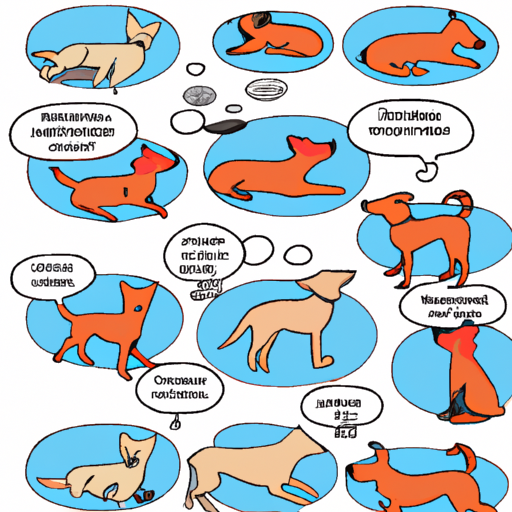Understanding Your Dog’s Sleep Patterns
Understanding your dog’s sleep patterns is an integral part of their care. Your furry friend’s sleep pattern can tell you a lot about their mental and physical health. It can alert you to changes in their behavior, mood, and overall well-being.
As a caregiver, it’s crucial to know that dogs, much like humans, have different sleep stages, including:
- Short-wave sleep (SWS)
- Rapid eye movement (REM) sleep
During the SWS stage, your dog is in a light sleep where they can wake up easily. In the REM stage, your dog is in deep sleep, and they might start to twitch, move their legs, or even bark.
Interpreting Your Dog’s Sleeping Position
Observing the position in which your dog sleeps can provide insights into their comfort level, temperature preference, and personality. Some common dog sleep positions include:
- The Lion Pose: Dog sleeps with head over paws, indicating they’re ready for action even in sleep.
- The Donut: Dog curls up in a ball, nose touching the tail, often indicating they’re trying to preserve body heat.
- The Superman: Dog sleeps on their belly, legs stretched out, suggesting they’re ready to jump into action.
| Sleep Position | Meaning |
|---|---|
| The Lion Pose | Ready for action |
| The Donut | Preserving body heat |
| The Superman | Ready to jump into action |
Dreaming Dogs
Yes, dogs do dream! Those random twitches, leg movements, or soft barks during their sleep might be signs of your dog having a dream. It’s crucial to let them complete their dream cycle. Interrupting their dreams may cause them to wake up disoriented or stressed.
How to Improve Your Dog’s Sleep
Just like you, your dog needs a comfortable environment to get a good night’s sleep. Here are some tips:
- Provide a comfortable and warm bed
- Keep their sleeping area quiet and dark
- Stick to a regular sleep schedule
- Ensure they get enough physical activity during the day
Sleep Disorders in Dogs
Sleep disorders are not just a human problem; dogs can suffer from them too. Conditions like insomnia, sleep apnea, and narcolepsy can affect dogs. If you notice sudden changes in your dog’s sleep pattern or behaviors like excessive daytime sleepiness, snoring, or difficulty breathing during sleep, it’s time to consult your vet.
FAQ
Q: How many hours do dogs sleep in a day?
A: On average, dogs sleep for about 12-14 hours a day.
Q: Why does my dog sleep so much?
A: Several factors can influence a dog’s sleep, including their age, breed, and health. If you’re concerned, it’s always best to consult a vet.
Q: Can dogs have nightmares?
A: Yes, dogs can have nightmares. If your dog appears distressed during sleep, it might be having a bad dream.
Q: How can I tell if my dog has a sleep disorder?
A: Changes in sleep patterns, excessive day sleeping, snoring, or difficulty breathing during sleep could indicate a sleep disorder. Always consult your vet if you notice any changes.
Q: Do dogs need a dark room to sleep?
A: While dogs aren’t as sensitive to light as humans, they can sleep better in a dark and quiet room.



